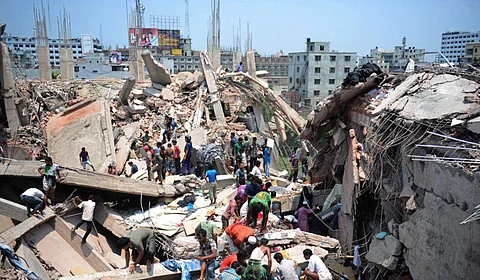

DHAKA: A Bangladeshi activist who rescued dozens of people when the Rana Plaza factory complex collapsed in 2013 has committed suicide after suffering years of trauma-related depression, police said Friday.
Police said Nowshad Hasan Himu, 27, killed himself near the industrial town of Savar late Wednesday on the sixth anniversary of the disaster, which killed 1,138 people in one of the world's worst industrial tragedies.
"He poured kerosene onto his body and set himself in fire. He was rushed to a Dhaka hospital where he died," police inspector Asgar Ali said.
He said they suspect Himu was suffering from a bout of depression, and friends confirmed that Himu had been traumatised by the disaster.
"He used to live alone at his home with two dogs. He avoided people," Ali said.
Tributes poured in for Himu, who was involved in left-wing politics, with friends saying he had struggled to process the deadly building collapse.
"He was at the Rana Plaza rescue work for 17 consecutive days. He helped rescue dozens of bodies and survivors," Taslima Akhter, a garment union leader and an award winning photographer, said.
Akhter said Himu also spent days in hospitals to help the survivors. When a worker died weeks after the disaster, he accompanied the body to her home in remote northern Bangladesh.
"He was deeply traumatised and was suffering from depression. He told his friends that he used to smell rotten bodies and would see dead bodies walking behind," she said.
Local and international media reported on the ordeal and trauma faced by scores of the Rana Plaza volunteers months after the tragedy. Himu is the first volunteer to take his life.
His death puts the spotlight on the continuing human toll of the Rana Plaza disaster, which saw the nine-floor factory complex collapse on the morning of April 24, 2013, trapping some 4,000 workers under its pancaked floors.
According to a survey in April conducted by British charity Action Aid, some 10 percent of Rana Plaza survivors are still traumatised six years after the disaster.
"We have seen that some of the volunteers who took part in the rescue work are still suffering from mental problems," Shuvhomoy Haque, who led the Action Aid survey, said.